Good examples of brand extensions can put a company in a better strategic position. Bad brand extensions are just ugly.
A brand extension (some times called a category extension) is when a brand is known for one type of product starts selling a different type of product.
Some example of brand extension are:
- Apple: from personal computers into MP3 players.
- Callaway: from golf clubs into footwear, apparel and golf accessories.
- Dyson: from vacuum cleaners into desk lamps.
- Starbucks: coffee-based beverages into energy drinks.
- Mailchimp: email marketing to Facebook ads.
- Coleman: from gas-powered lanterns to sleeping bags.
- Ferrari: from exotic sports cars to theme parks.
- Google: from search and extended into a hosted email service.
- Fender from guitars and amps into earbuds.
- Cosmopolitan: from magazines into yogurt.
- Snoop Dogg: from rap into a smoke-able book.
We elaborate on all of these examples below.

What makes some examples of brand extensions work, while others are disasters?
The success of the extension depends on how far the jump from one product category to the other. If they are close, then they can increase revenue. Too far and the result is brand dilution, or a loss of meaning for the brand.
Brand extensions / category extensions should be towards adjacent product categories.
For example, Apple started by making personal computers (Mac), and then jumped into personal audio (iPod) and then jumped again into smartphones (iPhone). Those were all good moves because now 62.21% of Apple’s sales come from iPhone.
But sometimes the products from brand extensions stray pretty far from the original product category the brand is known for.
Callaway started by making premium golf clubs, but now they make umbrellas, watches, towels, etc. These are all products are all designed for golfers but have entirely different engineering and construction methods than golf clubs. Callaway is pushing the limits of what their brand means; they risk diluting the brand.
Note: This article was originally published in March 2019, but we recently relaunched it with a few more examples.
Dyson
Vacuum Cleaners to Lighting
Original product category:
Vacuum cleaners
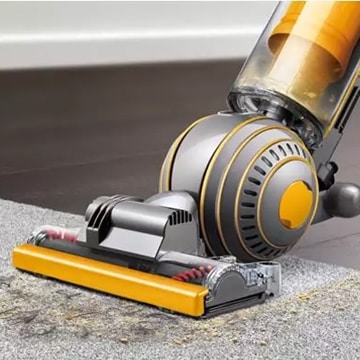
Vacuum products:
Dyson Ball, Dyson Slim Ball, Dyson v7, Dyson 360
Destination product category:
Lighting

Lighting products:
Dyson Lightcycle, Dyson CU Beam
History: Dyson’s DNA is trying to innovate on mundane and common products. James Dyson saw centrifugal separators used in industrial settings and they worked quite well and more reliably than pulling air through a bag; dust or particles get separated from the air in a cyclone because centrifugal force flings the massive particles to the side. James Dyson was able to miniaturize this technology and apply it to stand up vacuum cleaner, not without challenge mind you. He spent 5 years and tested 5,127 different designs.
James Dyson eventually had a vacuum that was far easier to empty; instead of replacing a dusty bag, you simply removed a cannister and dumped the dust in the garbage. Dyson could not strike a deal with Hoover to license his technology, most likely because the bag market was a 500 million dollar industry, at the time. Without the need for bags, Hoover and Dirt Devil’s profits and recurring revenue would get sucked away. Dyson went his own way, and the rest is history.
The Dyson brand is also no stranger to brand extensions:
- In 2006, the brand moved into commercial hand dryers with the Dyson Air Blade.
- In 2009, Dyson moved into fans with the Air Multiplier line of products. The fans had done away with the rattly, unsafe eyesores called fan blades.
- In 2011, they adapted their fans to be heaters.
- In 2015, they made a humidifier.
- In 2016, they made their fans into air purifiers.
- In 2016, they started making handheld hair dryers: the Dyson Supersonic.
What do vacuum cleaners, hand dryers, fans, space heaters, air purifiers, and hair dryers have in common? Moving air. If it is a Dyson product, it sucks or blows (… not in a derogatory way, get your mind out of the gutter!)
However, a lamp does not suck or blow. It poses the question: is the Dyson brand’s credibility in air moving or engineering more broadly?
Dyson tried once before. James Dyson would rather forget the companies foray into washing machines. They had a technology that left clothes dryer out of the wash cycle, but they could not make the brand extension profitable.
However, James’ son, Jake Dyson, had his venture trying to reinvent lighting as his father had reinvented vacuum cleaners. He thought that you could make lighting products that were more efficient, longer lasting, and human-centric. Jake and a team of 12 set out to design and produce the lighting products he thought was missing in the world.
“I couldn’t understand why people were making LED lights that didn’t last a lifetime,” Jake Dyson told Entrepreneur.com, “when LED [technology] had the potential [to do that].”
In 2015, James Dyson announced that his company would be acquiring his son’s company. Now Dyson proper sells a desk lamp and an architectural pendant lamp.
The Dyson Lightcycle desk lamp is an evolution of the CSYS LED Task Lamp from the previous company. The lamp has a heat pipe that allows the LED to operate at a much lower temperature, thus allowing the bulb to last at least sixty years. The lamp also features effortless movement, adaptive brightness, and adjustable color temperature. The lamp also has features appreciated by connected home aficionados, and seamlessly works with the Dyson Connect app. It retails for $599 USD for the desk lamp $899 for the floor lamp.
Lighting is as stagnant an industry as vacuum cleaners were before Dyson shook things up. However, the innovation of the original Dyson solved a clear pain point for customers: the frustration of changing vacuum cleaner bags. Does the innovation Jake Dyson has brought to lighting eliminate a pain point of similar magnitude?
Also, if one was to make a revolutionary lighting product, is Dyson the brand for the job? Alternatively, should Dyson stick to moving air?
My opinion: I probably would not choose to extend the Dyson brand into lighting; I would focus on moving air to keep the brand as pure as possible.
If you define the Dyson brand as premium engineering, then that loses all focus. They could make cars, computers, desk chairs… whatever.
Porsche tried to do this with Porsche Design, a venture that sought to leverage Porsche’s brand of high design into pens, timepieces, mobile phone, eyewear, and other everyday objects. Does it make money? Sure, but it confuses the brand more than it extends it.
Is the Dyson lamp going to be the rocketship of success that Dyson vacuum cleaner was? No, it does not solve a clear and present pain point. However, there are a small number of people who would want the lamp that Tony Stark would buy, but those people are willing to pay a premium.
Starbucks
Coffee-based Beverages to Energy Drinks
Original product category:
Coffee based beverages
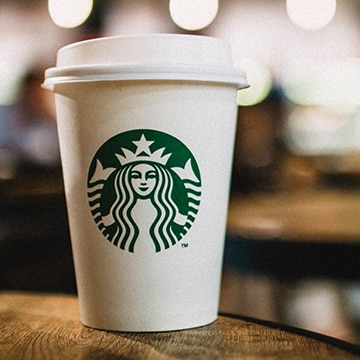
Coffee products:
Pikes Place Roast, Caffè Latte, Cappuccino, Frappuccino®
Destination product category:
Energy drinks
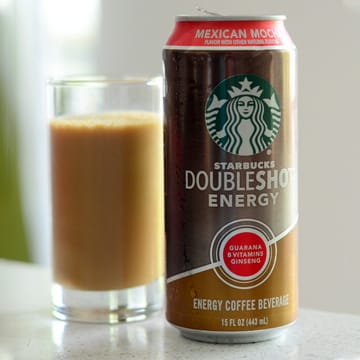
Energy drink products:
Starbucks Doubleshot Energy Coffee, Starbucks Doubleshot Energy Coffee Mocha
History: Starbucks brand promise is one of the clearest in all of branding. When you see a Starbucks logo on the side of a building, you can be guaranteed there is are rich, coffee base beverages inside and a pleasant environment to spend some time.
They have pushed the limits of the Starbucks brand at times, and it has worked out in some fundamental ways. Their introduction of the Frappuccino® was one of the best moves in business; it bolstered their summer sales and opened the brand up to an entirely new market of people who do not like the taste of coffee. Speaking of those people, they purchased and integrated the product of Teavanna so they could credibly make exceptional tea products.
However, Starbucks has not had the easiest time keeping it’s brand consistent. Many of their brand extensions have been good for short term earnings, but bad for the brand.
In his famous or infamous leaked letter to the Starbucks leadership team in February of 2007, founder Howard Schultz said:
“Over the past ten years, […] we have had to make a series of decisions that, in retrospect, have lead to the watering down of the Starbucks experience, and, what some may call, the commoditization of our brand.”
Schultz outlines the decisions he is talking about in his book: Onward. Most of the decisions he is referring to are procedural, machine, and supply chain decisions that lead to the taste of the coffee and espresso getting weaker. However, some partnerships and line extensions lead to the erosion of the brand promise as well; their in-store sales of CDs and the smells of burnt cheese emanating from the ovens that warmed their breakfast products were both confusing distractions for the customers from their coffee experiences.
These mistakes, and the hundreds of millions in lost sales that resulted, have not deterred Starbucks from pushing the boundaries of their product offerings.
Starbucks partnered with Pepsico to launch Starbucks Doubleshot® Energy+Coffee beverages in early 2008. This partnership took the Starbucks brand into convenience stores and a new section of the grocery store. The ready-to-drink energy market is far different from anything they had ventured into before, and it put them on the shelf beside brands like Red Bull, Monster, and Rockstar.
The Starbucks Doubleshot® coffee, espresso, and mocha flavors all taste like coffee, and the rest of the flavors are designed after other beverages on the Starbucks menu. So there is a legitimate claim to the Starbucks name, but does a coffee-based energy drink reinforce or confuse the Starbucks brand?
My take: as long as the beverages are 95% as tasty as the in-restaurant beverages, I don’t see a problem. The significant risk is that the tastes of the drinks suffer because of the ready-to-drink and shelf-stable nature of the product. Because Starbucks has a reputation for premium quality, they cannot afford to have an inferior product on the shelves.
I have not tasted it, but the fact that the program has been running for over a decade means that a large number of people like them.
Mailchimp
Email Marketing to Display Ads
Original product category:
Email newsletters

Email products:
Email distribution, Mailchimp Editor, Campaign Analytics
Destination product category:
Display ads
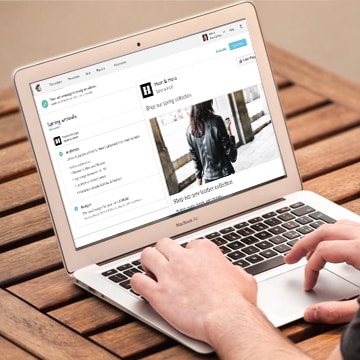
Display advertising products:
Marketing CRM, Social Media ads, Digital ads
History. Mailchimp is a fantastic success story that every small business owner should know. Ben Chestnut, Mark Armstrong, and Dan Kurzius have grown the company to one of the leading email marketing platforms with no venture funding. They may go public with no equity investment; they have created unbelievable wealth with minimal resources.
Their success came from simplifying the intimidating but essential process of emailing your customers in mass. They innovated on the pricing structure and HTML email editor so that a non-techy small business owner could comfortably stay in contact with their customer base.
However, that is not good enough for these industrious founders. They have their sites on displaying the entire customer relationship management (CRM) and marketing automation sectors. Marketing tech, or MarTech, has been a powerhouse of growth, spitting off companies like Hootsuite, HubSpot, and Marketo. It has attracted big players like Adobe and Salesforce who want a piece of the action.
Even though there is a tremendous amount of value being created from MarTech, the tools are still impenetrable for the average person. A full-time marketing technologist can barely get his or her tools to work together, so a small business owner has no hope to leverage the technology. A huge e-commerce company may be able to hire a CMO and a fleet of technologists to eke out 5% more ROI on a 50 million dollar ad buy, a mom and pop shop is going to get left behind.
However, Mailchimp is coming to the rescue, and bring their brand of approachable technology to all the smaller players.
“Our customers tell us that Mailchimp helps them look pro and grow,” says Mailchimp CEO, Ben Chestnut, on their blog.
Moreover, structurally it makes sense too. The lists of names, email addresses, IP addresses, and cell-phone numbers are the nucleus that all these MarTech services orbit around. You need personally identifiable data if you want to run customized ads, retargeting or abandoned cart follow-ups. Also, with General Data Protection Regulation (GDPR) and new California laws, you have to be careful how you pass this data around. That data has been in Mailchimp all along, so it makes sense to keep it there.
“Businesses keep their customer data and product photos in Mailchimp, so it’s the perfect place to kick off an ad campaign to acquire new customers using the data and content they already have,” says John Foreman, VP of Product Management. “And since a user can sync up their store with Mailchimp, we can even tell you the ROI and sales your ad generated. That’s always been tough for entrepreneurs.”
Now, Mailchimp is a full-service marketing platform, but back in 2017, they started by helping their email newsletter clients make Facebook ads with a workflow that was similar to crafting an email. They didn’t even take a cut; they just passed through the direct cost from Facebook. It was simply a value add to their monthly subscription. Now clients can run ads on every major social media website and display ad network.
Mail is in the name Mailchimp; is a company that made their brand helping people make weekly newsletters appropriate for introducing the masses to a complete suite of communication and marketing tools?
My thoughts: I have a bit of a concern that putting small business owners into a full-featured CRM is like asking them to drink from a fire hose. Email newsletters are a simple, approachable introduction into communicating with customers, an activity that is desperately needed but horribly neglected by small business owners. I worry that blitzing clients with all these options will turn them off. However, Mailchimp is full of smart people, and I am sure they can solve that issue.
However, overall, I believe Mailchimps brand promise is about making it easy for small-medium sized businesses (SMBs) to communicate with their customers without needing expertise. Email is one channel, but other channels accomplish the same goal. It is entirely appropriate for Mailchimp to carefully and approachable introduce these different channels.
Coleman
Gas-Powered Lanterns to Sleeping Bags
Original product category:
Gas-powered lanterns
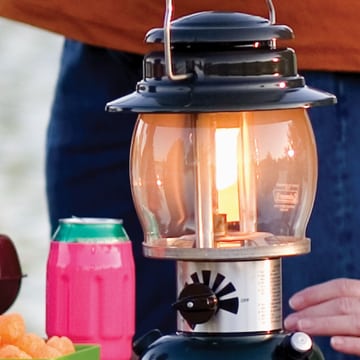
Lantern products:
Kerosene Lantern, Northstar Propane Lantern
Destination product category:
Sleeping bags
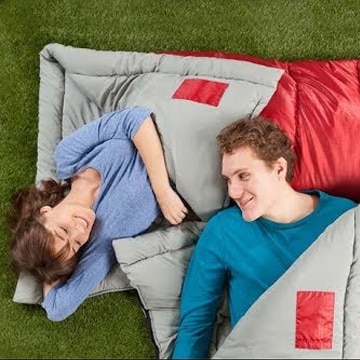
Sleeping bag products:
Palmetto™ Cool Weather Sleeping Bag, Biscayne™ Warm Weather Sleeping Bag
History: The Coleman brand has been around for over a century. William Coffin Coleman started making gasoline pressure lamps in 1900. Back then, they lit places like football games with gasoline when electricity wasn’t as ubiquitous as it is today.
But Coleman was defined by the use of their portable gas-powered lanterns in camping. Outdoorsy people would bring these lamps with them as a light and reliable source of both heat and illumination.
I would imagine that when Mr. Coleman started his company, he wasn’t thinking that his name would become synonymous with camping, but it is now. They make every product that a camper could want: tents, sleeping bags, camp stoves, cookware, etc. Coleman is now a brand owned by Newell Brands, who owns other brands like Elmer’s, Sharpie, Contigo, Yankee Candle, and Crock-Pot. (Full disclosure: I have worked with Newell Brands and may again in the future.)
If you define the Coleman brand as an outdoors brand, then making lamps and sleeping bags makes total sense. But otherwise, it makes no sense. One is metal, glass and blasts heat, and the other is fabric, down and contains heat. It was a big risk when Coleman started putting their brand on other camping essentials.
Is brand extension is on Ed Tauber list of successful brand extensions when he studied the concept in 1988, and David Aaker reiterates that on the Prophet blog. But is it a reasonable extension?
My take: In my mind, it seems reasonable. Campers would be comforted to have the same quality and dependability of their Coleman lamp in all of their camping products.
There are other activities that dilute and confuse the Coleman brand, like when they put their brand on barbecues and HVAC systems. I really struggle to see any overlap with those products and the core camping products… they all use gas? Nope, the tents and cookware don’t. They keep things warm? I don’t know; tell me in the comments.
Ferrari
Exotic Cars to Theme Parks
Original product category:
Exotic cars
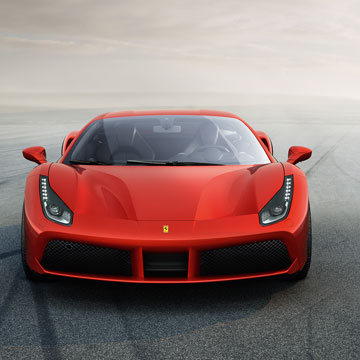
Exotic car products:
Ferrari 488, Ferrari 812 Superfast, Ferrari Portofino
Destination product category:
Theme parks
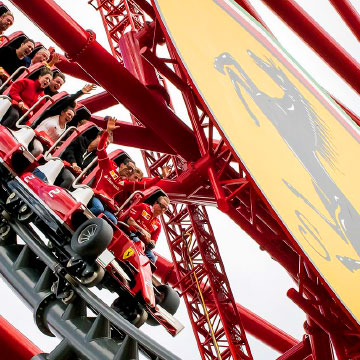
Theme park products:
Ferrari Land (Spain), Ferrari World (Abu Dhabi)
History. Ferrari is an Italian company that has been producing sports cars since 1947. Ferrari’s co-missions of producing expensive, exotic, high-performance sports cars as well as dominating racing (particularly Formula 1) has created a brand synonymous with speed, excitement, luxury, and engineering excellence. Their consistent use of a specific shade of red (Rosso Corsa / racing red) has made their brand instantly recognizable.
Taking a page out of Disney’s playbook, Ferrari has started putting its name on theme parks. In 2010, Ferrari World was opened on Yas Island in Abu Dhabi in the United Arab Emirates with the claiming to have the fastest roller coaster in the world: Formula Rossa. In 2017, Ferrari land was opened as an extension of the Spanish entertainment resort PortAventura World. Ferrari Land is home to Red Force, the tallest and fastest roller coaster in Europe.
My take. I don’t see a problem with this brand extension, even if it is far from the original category. It maintains and leverages all of the Ferrari brand associations: speed, excitement, luxury, and engineering excellence. The tactic of opening both parks with record-shattering roller coasters correctly builds the Ferrari brand.
Ferrari is also a fantasy for most of its fans. It reminds me of Disney in that sense; their movies takes us all on an adventure in a fantasy world. Maybe that fantasy is the secret ingredient to make for a fun theme park.
Google
Search Engine to Email
Original product category:
Search engine

Search engine:
Google.com
Destination product category:
Web based email

Email product:
Google Mail, Gmail
History. Google launched their search engine in 1998 to early internet users who were eager to access the entire web. At the time, Yahoo and Lycos were navigating people through lists of links and poorly ranked search pages. No one could truly search the internet.
Email was different. It was never the intention founders of Google, Larry Page or Sergey Brin, to launch an email service. The Google team worked on it as a secret project, and it famously first ran on a handful of Pentium III computers that no one wanted.
When nearly the entire company was using Google Mail as their email client, the executives wondered if this was something worth sharing with the world. They introduced it slowly by restricting signups through invitations and growing peoples server disk space over time. Gmail was a beta release for years, signalling to users that is wasn’t fully developed. Launching it was a risk; many people forget the leap of faith Gmail was for Google.
My take. Gmail has been a good thing for Google. It was their foray into creating free services for people in exchange for personal information to target ads. Google makes the vast majority of their money from ads appearing next to search results, and only Gmail (and subsequent web apps) have been the only activities that have significantly contributed to the revenue of Alphabet, Google’s parent company.
Google is an example in this article is because they has used brand extensions more eagerly than any other company. Gmail, GDocs, Google Chat, Android, Made by Google, Google+, and many many more all try to leverage the Google name to find the next big revenue source.
Google restructured to be Alphabet in 2015 so they can get into product categories like medical devices, longevity, and space exploration without the Google name. Some product categories just don’t make sense for brand extension, and Alphabet knows that.
Snoop Dogg
Rap to Smokable Book
Original product category:
Rap music

Rap albums:
Doggystyle, The Doggfather, Bible of Love
Destination product category:
Book made of rolling papers
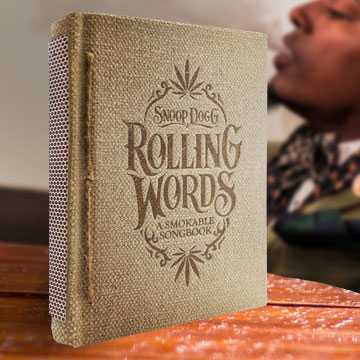
Smokable book product:
Snoop Dogg “Rolling Words: A Smokable Song Book”
History. Calvin Cordozar Broadus Jr., better known as Snoop Dogg, has been a songwriter, music producer, and actor but he is known for his rap. Along with Eminem, he was one of the first to be produced by Dr. Dre, founder of Beats by Dre. The three rappers were thrust into the mainstream in the mid-90s when rap went from the inner city to the suburbs and beyond. Right place, right people, right time.
Snoop has never hidden his love for marijuana, and smoking was the topic and feature of many of his songs. Weed connected him to a lot of fans who loved the counter culture movement of smoking the then illegal drug.
In 2012, Snoop Dogg released Rolling Words: A Smokable Songbook. It was the idea of the advertising firm Pereira O’Dell as a promotional activity. It is not on the market anymore but does sell as a collector’s item for $50 to $150. People loved it, and further connected Snoop to his core fans.
My take. This is an excellent example of how a brand extension needs to consider the tribe of followers of the brand more than the adjacency of the product category. A smokable book has nothing to do with music, but everything to do with Snoop’s people, message and brand associations.
What distant product would connect your brand to your tribe? Take a page out of Snoop’s book and smoke it (pun intended).
Fender
Guitars to Earbuds
Original product category:
Electric guitars

Guitar products:
Stratocaster, Telecaster, Jazzmaster, Jaguar, Mustang
Destination product category:
Headphones
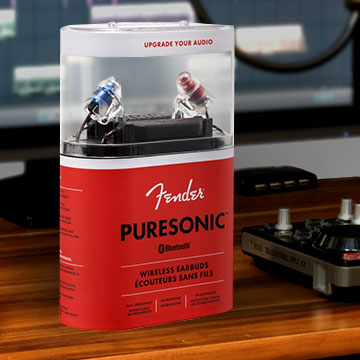
Headphone products:
PureSonic™ Wired Earbuds, PureSonic™ Wireless Earbuds
History. Fender was started in the Californian sunshine of 1938 by Leo Fender. He was an electronics technician and saw flaws in how the sound waves from electric instruments were captured and amplified. He introduced a lap steel guitar and amp with innovative pickups and electronics in 1945, but the brand didn’t take off until he designed a more conventional guitar with the electronics.
Fender introduced its first headphone, the Fender Pro In-Ear Monitors, in 2016. This was their first consumer electronics product; this was a long-term strategic move from Fender executives. They acquired Aurisonics a year previous to design top quality products in-house. Now they offer the Puresonic line of earbuds in both wired and wireless format.
My take. I am impressed with the way Fender went into this market strategically. I am sure personal audio companies have approached Fender to put their logo on white label headphones. Fender must have turned them down to save their respected brand name for a product that would be up to their high standards.
Great audio and great electronics are in Fender’s brand DNA. This is a great brand extension assuming the earbuds have great audio quality.
I’d buy them, except earbuds never fit my ears quite right; I’ll take over ear headphones every time. Does anyone else have this problem?
Cosmopolitan
Magazine to Yogurt
Original product category:
Magazines

Magazine products:
Cosmopolitan, Cosmo Girl
Destination product category:
Single Serving Yogurt
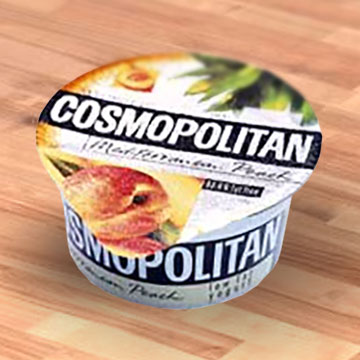
Yogurt product:
Cosmo Yogurts
History. We had to end on a funny one.
What is there to say? Cosmopolitan has been a very long-running magazine (starting in 1886!) and has grown a readership of women looking to improve their lives.
Cosmo tried to leverage their connection with young adult women, and launched quite a few products in the 90s. Yogurt was one of those products.
The yogurt launched in 1999. This wasn’t even a license play; they opened a new division called Cosmo Yogurts. The executives were very committed to this questionable strategy.
My take. Maybe a Cosmopolitan executive in 1999 was visited by the ghost-of-Christmas-future, because predicted the massive decline in revenue and profit the publishing industry would soon face. Print was crushed when digital media went mainstream.
Their readership of the magazine had the same demographics as yogurt eaters: young adult women. It seemed like a good strategy on paper… doesn’t it?
But why does Snoop Dogg’s Rolling Words work and Cosmopolitan Yogurt fail? Aren’t they both are just selling to an audience they already have an established relationship with?
More about brand extensions.
Brand extensions can be beneficial.
A well thought brand extension can increase brand awareness and reduce costs.
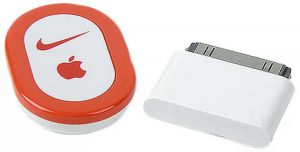
The benefits of brand extensions can be increasing brand awareness, and lowering total marketing spend per unit.
Brand extensions are a popular marketing strategy because the marketing costs of creating brand awareness can be spread over multiple product lines. Instead of building a brand from scratch, established brands can leverage their brand awareness in one product category to gain a foothold in a new product category. This strategic advantage is part of the reason I recommend tracking and investing in brand equity through brand marketing.
Costs drop once both categories have been established. Once both product lines are selling, both benefit from spending on activities to build brand awareness, such as sponsorship, short video ads, and influencer shout-outs. The costs can be divided between all the product lines under the brand.
For example, Proctor & Gamble’s costs associated with Gillette.com, sponsoring Gillette Stadium, and their recent viral video campaign are spread over all of Gillette’s product lines: razors, shaving creams, soaps, skin care items, and deodorants.
But sometimes brand extensions bite back.
The big risk: overextension.
The risk from brand extensions is that the brand and company can become overextended. Brand extensions do not eliminate the competition; in fact, the company is now competing on multiple fronts with twice the competitors. This is costly and capital intensive.
Brand dilution is also a problem. Brand marketers, particularly with luxury brands, should use brand extension cautiously in order to avoid diluting the core brand. For example, luxury brands often put their logo on unrelated types of products and confuse what the core brand really means. Low quality merchandise in the new product lines can reflect poorly on the quality of the original product.
For example, Diane von Furstenberg built her brand on an innovative wrap dress, and then extended her brand into beauty products, fragrances, luggage, eyewear, jeans, and books. The extensions killed the sales of the core brand because people didn’t know what the Diane von Furstenberg brand meant if they made crap like luggage.
Not a pivot or a line extension.
A full brand pivot, or extending an existing product line with a new product are NOT brand extensions.
Note that a brand extension is not a pivot. A brand pivot is when a company, typically a startup, completely gives up making a type of product to compete in another category.
A line extension is when a brand introduces a new product in the same category. For example, Crayola starts making a new color of marker or Mercedes makes a wagon version of their C-Class car line.
BMB has an article with 9 interesting examples of Product Line Extensions. From Crystal Pepsi to to the Colgate with a cannabis leaf on the tube, we go into some crazy and effective product line extensions.
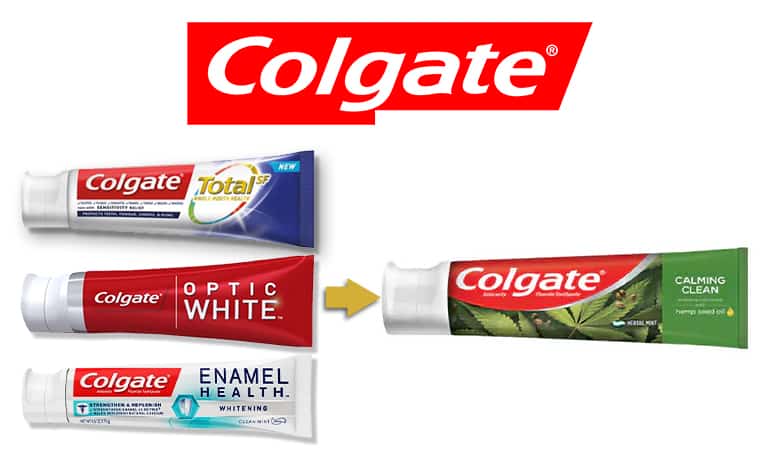
A brand extension is the when a moves into a new product category while still competing in their original category.
When do brand extensions go too far?
The answer is brand associations and credibility. Snoop Dogg’s brand associations play right into a book you can smoke, and his fans would trust him to make sure it’s awesome.
The things that people associate with the Cosmopolitan brand (self-improvement, gossip, sex tips, beauty, etc.) do not apply at all to yogurt. What makes Cosmo good at media does not make them good at yogurt. They have no credibility in that space.
But thanks for trying out.
Co-Branding. An alternative to brand extensions.
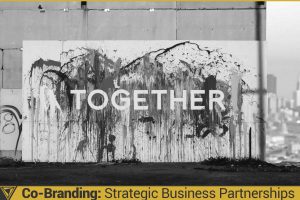
Co-Branding. More than the sum of their parts; brands can collaborate for great success (or disaster!)
Making a co-branded product way to do a “far-off” line extension without stretching the definition of your brand. Co-branding is when two brands partner on a line extension. The combination of the two brands can make more sense in the new product category than one brand alone. BMB compiled 17 examples of co-branding in another article, and you won’t believe who else Apple partnered with.
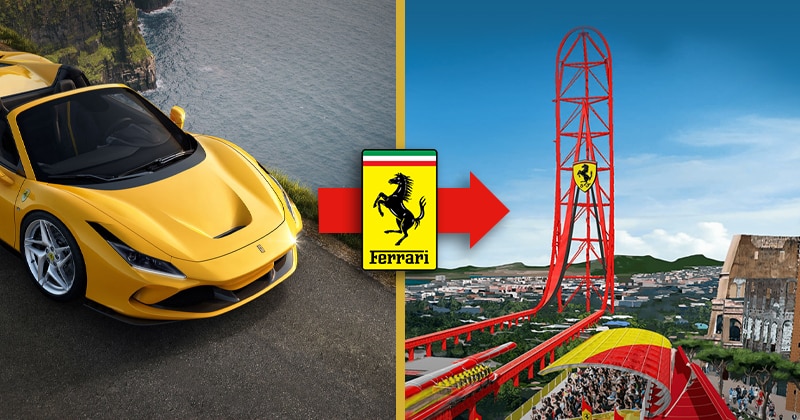
Leave a Reply